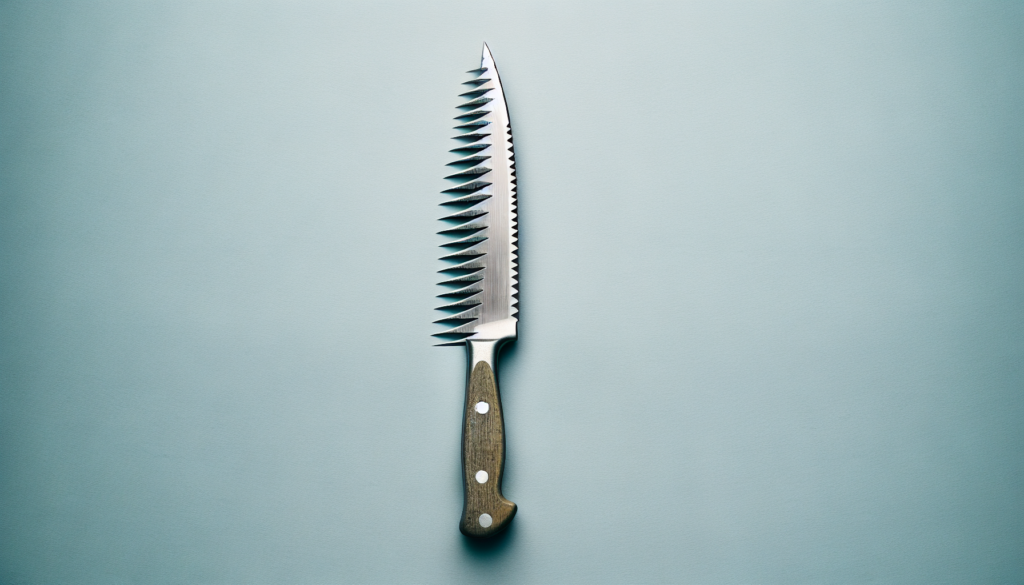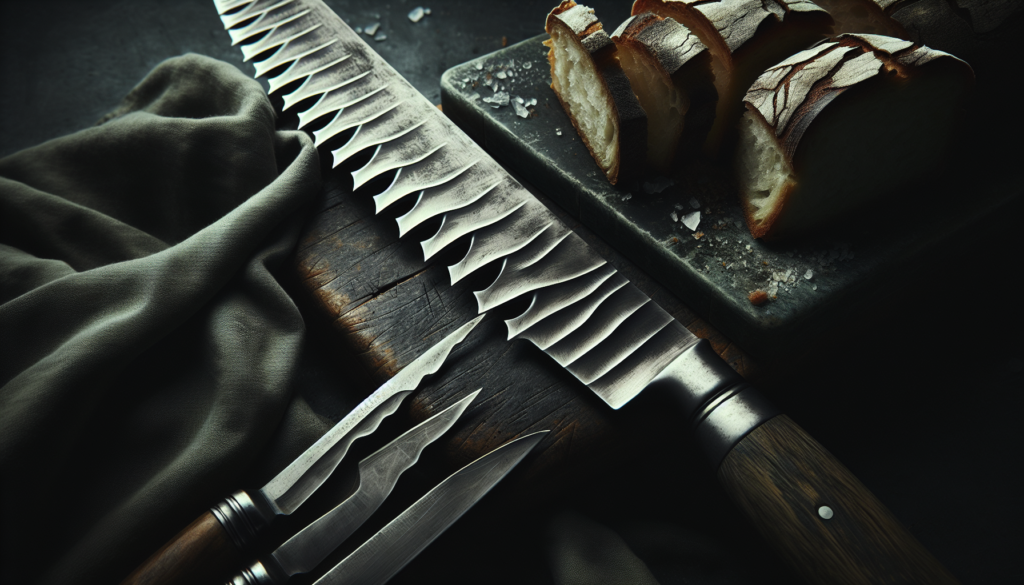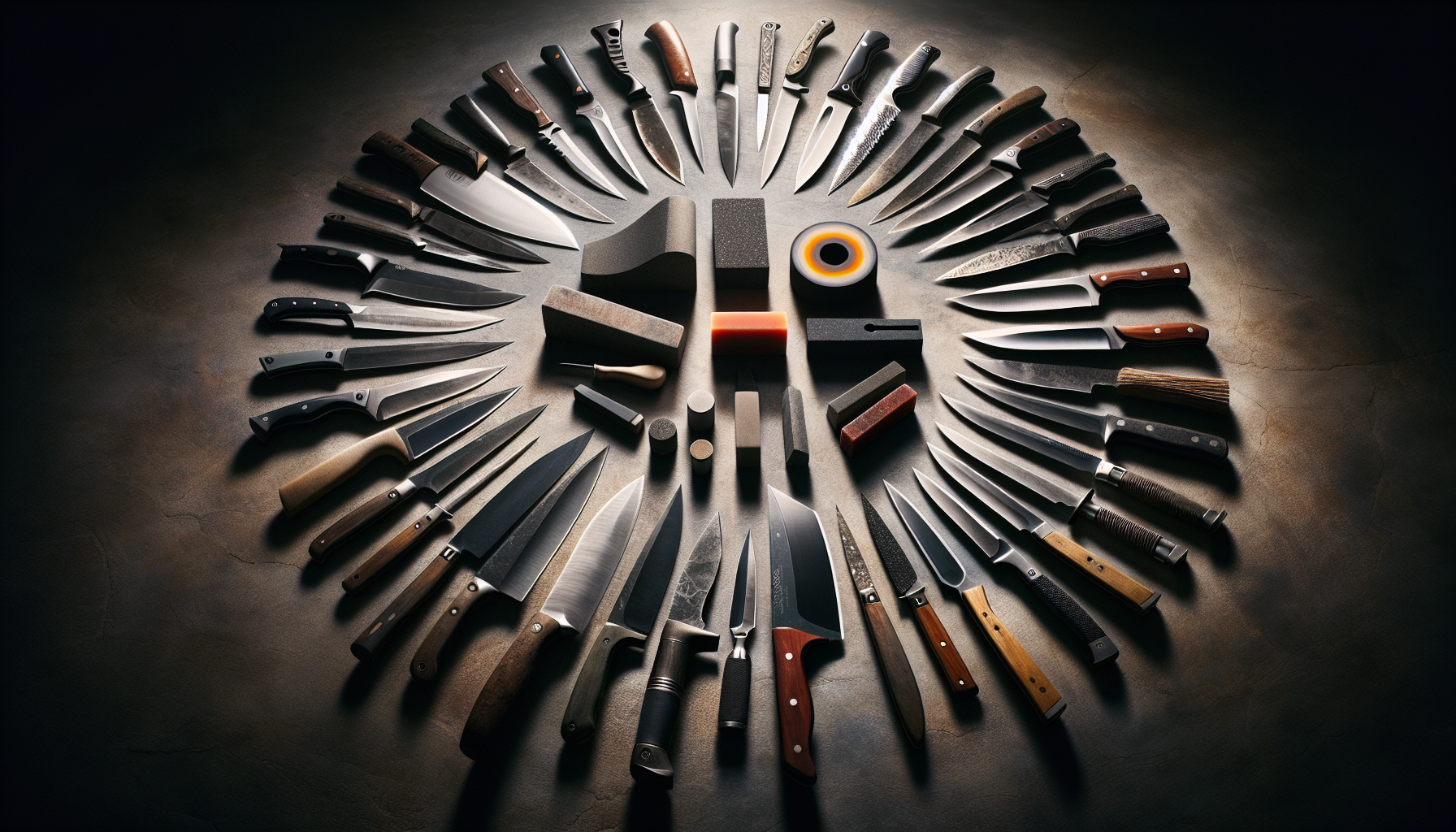If you’ve ever wondered which knives cannot be sharpened, you’ve come to the right place. From the delicate and ornate to the serrated and disposable, this article explores a wide range of knives that present unique challenges when it comes to honing their blades.
Whether you’re a seasoned chef or a casual home cook, knowing which knives require special attention can help you take better care of your kitchen tools and prolong their lifespan. So, if you’re ready to learn about these intriguing blades and expand your knowledge in the world of knife maintenance, let’s get started!
Which Knives Cannot be Sharpened?
Introduction
As an avid chef or kitchen enthusiast, it is important to have a sharp and reliable set of knives. However, not all knives can be sharpened in the same way. While many blades can be easily honed to a fine edge, there are certain types of knives that require special attention. In this article, we will explore the knives that cannot be sharpened conventionally and discuss alternative solutions to keep them in top condition.
1. Knives with Serrated Blades
Serrated blades are commonly found in bread knives and some steak knives. Their jagged edges allow for effortless slicing through crusty bread or tender cuts of meat. However, sharpening a serrated blade using traditional methods can be challenging. The unique design of these knives requires specialized tools, such as a serrated knife sharpener or a sharpening rod with a tapered edge. These tools enable you to restore the sharpness of the individual serrations without compromising the overall functionality of the knife.

2. Ceramic Knives
Ceramic knives have gained popularity in recent years due to their exceptional sharpness and corrosion-resistant properties. However, unlike traditional steel knives, ceramic blades are extremely hard and brittle. As a result, they require specialized sharpening tools specifically designed for ceramic blades. Attempting to sharpen a ceramic knife without the correct tools can lead to irreversible damage or even breakage. Therefore, it is recommended to consult a professional knife sharpener experienced in handling ceramic knives to maintain their performance and longevity.
3. Scalloped-Edge Knives
Scalloped-edge knives, also known as granton knives, are commonly used for slicing or cutting items with a tendency to stick to the blade, such as cheese or fatty meat. These knives feature oval indentations along the cutting edge, which reduce friction and prevent food from sticking. However, sharpening a scalloped-edge knife can be challenging due to its unique design. The indentations require a specialized sharpening technique that is best left to professionals. Seeking the expertise of a knife sharpener who is familiar with granton knives will ensure that the scalloped edge is maintained effectively.

4. Disposable Knives
Disposable knives, often made from plastic or cheap materials, are intended to be used for a single occasion or a limited number of times. These knives are not designed to be sharpened or reused. Their low-quality construction and lack of durability make sharpening attempts futile. However, it is worth noting that disposable knives are not meant for tasks that require precision or longevity. If you find yourself frequently needing disposable knives for various tasks, it may be worth investing in a more robust set of reusable knives that can be sharpened and maintained.
5. Butter Knives
Butter knives, often used for spreading butter or other condiments, are unlikely candidates for sharpening. These knives have dull, rounded edges as their purpose is not to cut through tough substances, but rather to spread them evenly. While it may be tempting to sharpen a butter knife to improve its cutting capabilities, it is not recommended. Instead, focus on maintaining the smoothness of the knife’s edge and keeping it free from any nicks or dents.

6. Utility Knives
Utility knives, known for their versatility and all-purpose functionality, often come with replaceable blades. These blades are designed to be easily swapped out when they become dull. While some utility knives may have blades that can be sharpened, it is more common to replace the blade altogether. This ensures a consistently sharp cutting edge and reduces the risk of accidents caused by trying to sharpen a blade that may no longer be structurally sound.
7. Fillet Knives with Flexible Blades
Fillet knives are essential for delicate tasks such as filleting fish or deboning poultry. Some fillet knives are equipped with flexible blades, allowing for more precision and maneuverability. Sharpening a fillet knife with a flexible blade can be a delicate process, as over-sharpening may compromise its flexibility. It is recommended to seek professional help to ensure the blade retains its desired level of flexibility while maintaining optimal sharpness.

8. Knives with Damaged or Worn Blades
Knives that have damaged or heavily worn blades may not be suitable for traditional sharpening methods. Deep nicks, chips, or excessive wear can affect the integrity of the blade, making it difficult or impossible to restore its original sharpness. In such cases, it is advisable to take the knife to a professional who can evaluate its condition and provide solutions, such as blade repair or replacement, depending on the severity of the damage.
9. Knives with Single-Beveled Blades
Single-beveled blades, commonly associated with Asian-style knives like the Japanese sushi knife or the Chinese cleaver, have only one cutting edge. These blades are typically sharpened at a steeper angle on one side, allowing for precise and clean cuts. Sharpening a single-beveled blade requires a different technique and expertise compared to sharpening a double-beveled blade. If you are uncertain about the sharpening process for a single-beveled blade, it is best to consult a professional sharpener who specializes in Asian-style knives.
10. Understanding when to Repair or Replace a Knife
While regular maintenance and sharpening can extend the lifespan of a knife, there comes a time when repair or replacement is necessary. If a knife’s blade is damaged beyond repair or if sharpening attempts do not restore its functionality, it may be more cost-effective and safer to invest in a new knife. Understanding when to let go of a knife and replace it will ensure you have efficient and reliable tools in your kitchen.
In conclusion, knowing which knives cannot be sharpened conventionally can save you from damaging your precious blades. Knives such as serrated blades, ceramic knives, scalloped-edge knives, disposable knives, butter knives, utility knives, fillet knives with flexible blades, and knives with single-beveled blades all require specialized attention for maintenance and sharpening. Seeking professional help and utilizing appropriate sharpening tools will help you keep your knives in excellent condition for enjoyable and safe culinary experiences. Remember, it is important to understand the limitations of each knife and make informed decisions about whether to repair or replace them when necessary.



